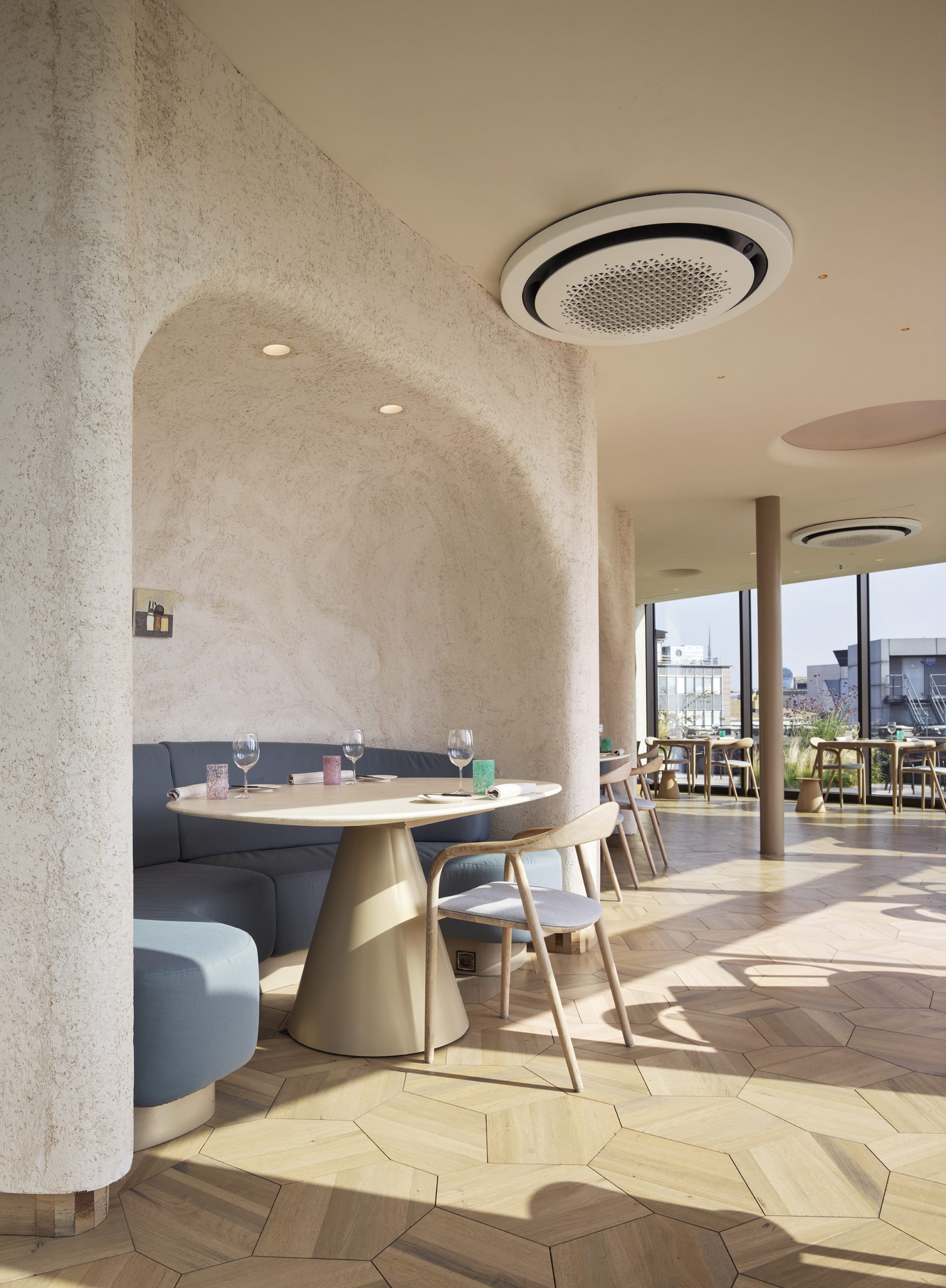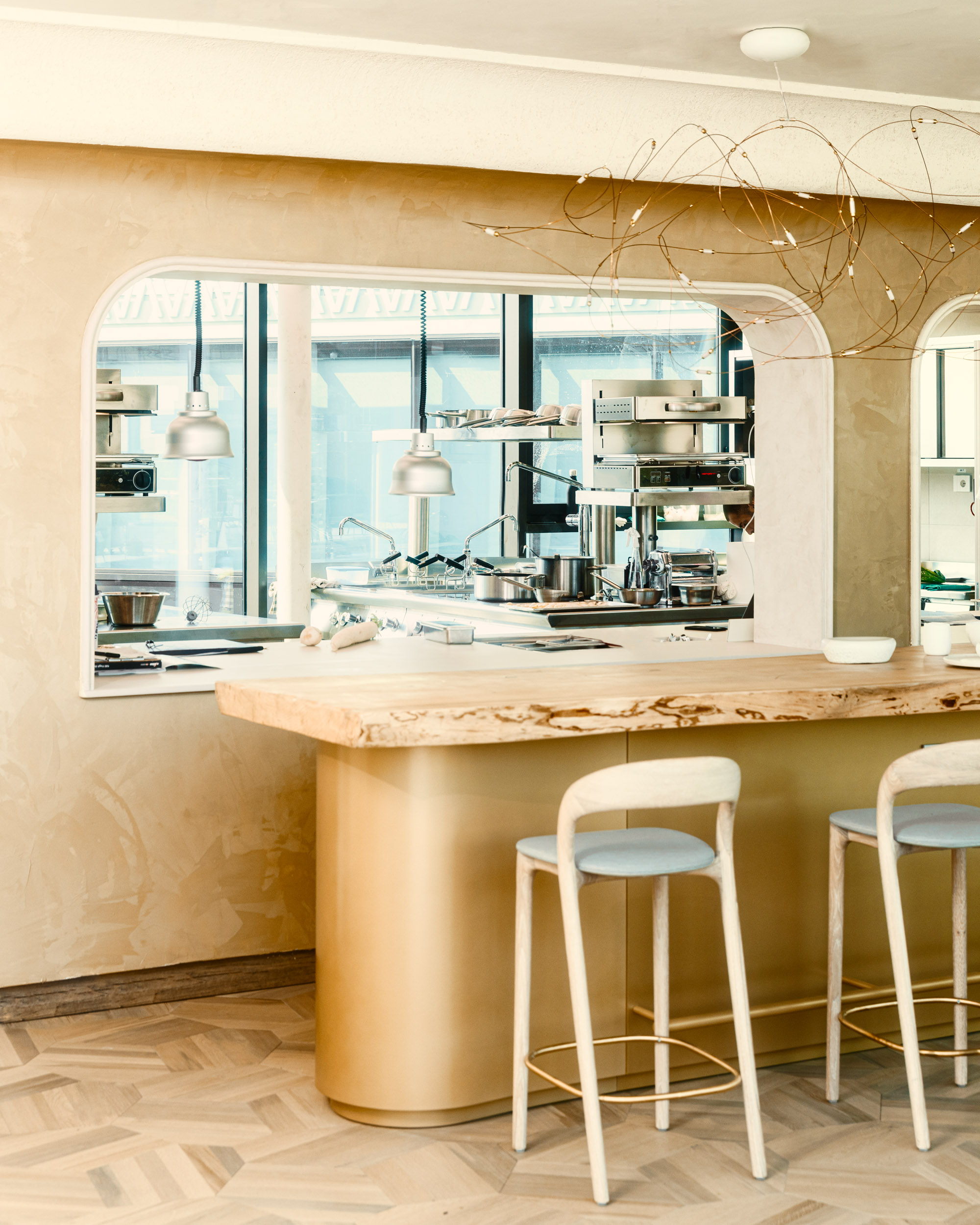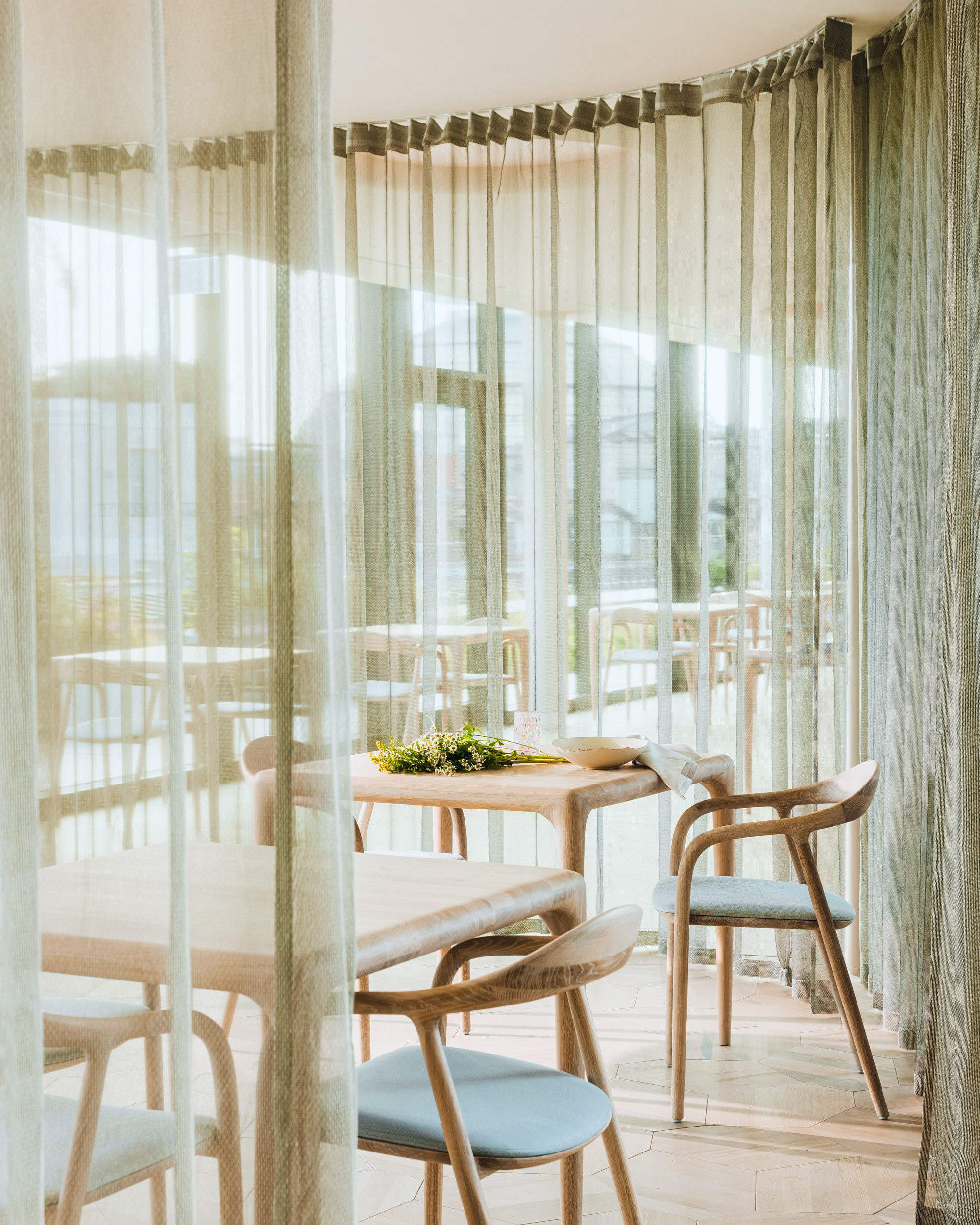
The ambience of Horto, both in its indoor and outdoor spaces, features a contemporary style, yet in harmony with the […]


The ambience of Horto, both in its indoor and outdoor spaces, features a contemporary style, yet in harmony with the tradition of the modern Milanese. The restaurant is located on the terrace of The Medelan, originally Palazzo Broggi, designed by Giovanni Muzio in the late 1800s, which for years housed the HQs of Credito Italiano.
The interior design project conceived Horto as an organic, immersive environment, focusing on a dreamlike vision suggested by this place of heightened pleasure, so close to the sky and far from the urban bustle.
Horto features organic and curvy shapes made of natural materials and colors, creating an almost monochromatic fusion of space by proposing an ethereal, pure, and cozy environment with little visual pollution, where one can indulge to moments of conviviality. Alongside the dreamlike atmosphere, which was the cornerstone of all design choices, the other guiding element was the search for materials that followed the “zero waste” principle, to mirror the chef’s philosophy also in the design.
The walls are covered with rice plaster, which is obtained by reusing waste from agricultural and industrial rice processing. The parquet flooring, a typical Milanese finishing, is laid in a pattern that breaks away from classical standard, and each element is made from recycled wood from old vinegar factories. Considering the uniqueness of the terrace and the expansive view over the entire city of Milan, Collina and GLA removed any kind of diaphragm between indoor and outdoor spaces through a fully glazed wall surrounding the location, thus bringing the city of Milan all the way to Horto and making it the star of the experience. The space features a completely open floor plan, but has been organized so as to create different areas where private gatherings will be held in small indoor alcoves, larger meetings in the open main hall, and special celebrations in the outdoor green spaces.
The lights are intended to blend discreetly and quietly with the interior envelope, thanks also to some spotlights.
In line with the philosophy of transparency, the vast kitchen is visible to the guests, who can then participate in all food preparation processes.
The ambience of Horto, both in its indoor and outdoor spaces, features a contemporary style, yet in harmony with the tradition of the modern Milanese. The restaurant is located on the terrace of The Medelan, originally Palazzo Broggi, designed by Giovanni Muzio in the late 1800s, which for years housed the HQs of Credito Italiano.
The interior design project conceived Horto as an organic, immersive environment, focusing on a dreamlike vision suggested by this place of heightened pleasure, so close to the sky and far from the urban bustle.
Horto features organic and curvy shapes made of natural materials and colors, creating an almost monochromatic fusion of space by proposing an ethereal, pure, and cozy environment with little visual pollution, where one can indulge to moments of conviviality. Alongside the dreamlike atmosphere, which was the cornerstone of all design choices, the other guiding element was the search for materials that followed the “zero waste” principle, to mirror the chef’s philosophy also in the design.
The walls are covered with rice plaster, which is obtained by reusing waste from agricultural and industrial rice processing. The parquet flooring, a typical Milanese finishing, is laid in a pattern that breaks away from classical standard, and each element is made from recycled wood from old vinegar factories. Considering the uniqueness of the terrace and the expansive view over the entire city of Milan, Collina and GLA removed any kind of diaphragm between indoor and outdoor spaces through a fully glazed wall surrounding the location, thus bringing the city of Milan all the way to Horto and making it the star of the experience. The space features a completely open floor plan, but has been organized so as to create different areas where private gatherings will be held in small indoor alcoves, larger meetings in the open main hall, and special celebrations in the outdoor green spaces.
The lights are intended to blend discreetly and quietly with the interior envelope, thanks also to some spotlights.
In line with the philosophy of transparency, the vast kitchen is visible to the guests, who can then participate in all food preparation processes.
| Client |
|
| Location |
|
| Duration |
|
| Area |
|
| Services Requested |
|




